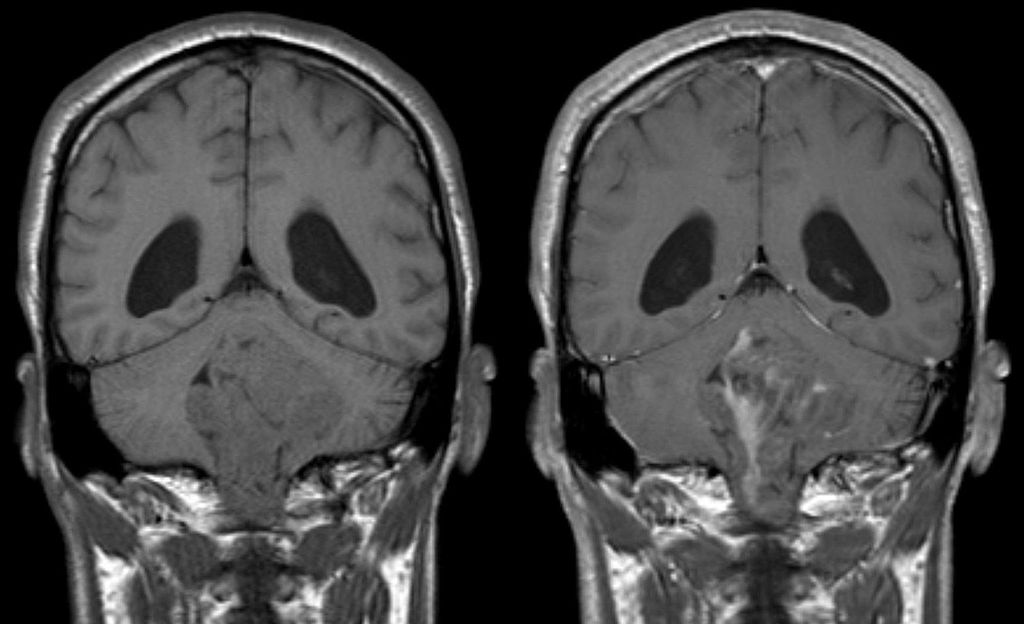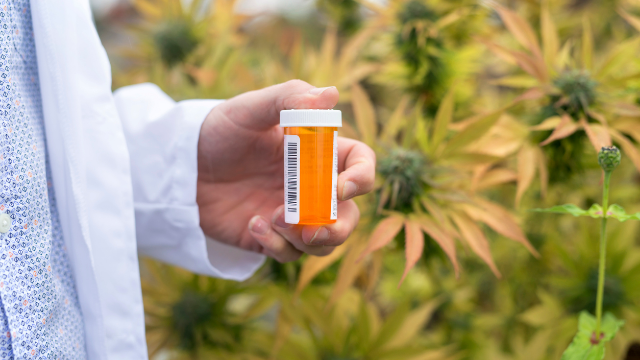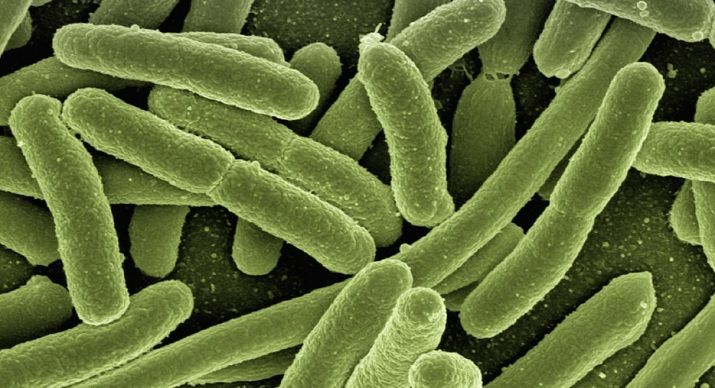Each day that goes by, we hear of more conditions that cannabis is, or may be, effective for. Here are ten new breakthroughs in cannabis medicine.
Ten recent medical marijuana breakthroughs
Medical marijuana has been making breakthroughs for years with technology continuing to advance at a rapid pace.
With laws changing all of the time and more research being done on the medical benefits of cannabinoids found in marijuana, we are witnessing some exciting things happening in the medical industry. We’ve compiled a list of just ten of the more recent major medical marijuana breakthroughs:
1. Brain Cancer

Glioblastoma multiforme is a serious and often fatal form of brain cancer. An average of 70 percent of patients diagnosed with the disease had a chance of surviving and most did not live past two years from the initial diagnosis.
British-based GW Pharmaceuticals however has brought new hope to patients with this form of cancer thanks to cannabis. The company tested two groups of patients: one group was given medical marijuana containing both THC and CBD and the other group was given a placebo. Those who took the medical marijuana had an increased life expectancy of six months longer than those who took the placebo. Hopefully as research continues, this expectancy can go beyond six months.
2. Cannabis and chemotherapy

A recent study conducted by the University of London found that both THC and CBD boosted the effectiveness of chemotherapy drugs when combatting leukemia. The result of using both THC and CBD alongside chemotherapy produced better results than chemotherapy on its own. The research found that an initial dose of chemotherapy followed by cannabinoids significantly improved overall results against the blood cancer cells. This research shows that there is potential for lower doses of chemotherapy to be used in treatment, with hopefully fewer harsh side-effects that come with it.
3. Treating Fibromyalgia

A California biotech company Cannabis Science Inc. developed a transdermal patch to treat people with fibromyalgia. The transdermal patch is equal parts THC and CBD and delivers a consistent supply of cannabis active ingredients without the patient having to smoke or ingest cannabis otherwise. The company also created a high-CBD patch for treating patients with diabetic neautopathy.
4. Pain in Multiple Sclerosis (MS) Patients

Researchers at the University of Manitoba in Canada have tested the effects of CBD oil on mice to see if it could reduce the amount of neuropathic pain in MS patients. Studies have currently only been done on mice but have been successful so far. If the results continue to prove positive, it’s likely that oil for neuropathic pain from MS will be developed for human use.
5. Alzheimer’s Disease

Researchers in California at the Salk Institute for Biological Studies have recently discovered that the THC molecule attacks against Alzheimer’s. It relieves the inflammation and works to remove amyloid from the brain, which can potentially reverse the negative effects of Alzheimer’s. More work is being done to better understand how it is that cannabis inhibits the development of Alzheimer’s.
6. Opioid Abuse reduction

A study conducted by Johns Hopkins Bloomberg School of Public Health found a 25% drop in opioid overdoses in states with a medical marijuana program. In places where cannabis is prescribed as a treatment for chronic pain, prescriptions rates of oxycontin, Vicodin and Percocet has dropped substantially. This means there are fewer opioids in the streets, a huge drop in addiction and far fewer overdoses.
7. Genomics for large scale production

Methods in genomics are being used by growers to manipulate crops for better control of THC and CBD content as well as other traits that can achieve medical benefits for specific diseases or ailments. Growers are able to do this by choosing plants with the largest yields and most potent flowers and crossing them together so that the potency is increased over time. Cross breeding strains has largely been for the purpose of creating stronger potency for recreational use, but with a huge focus on the medical benefits, it’s likely we’ll see even more medical uses thanks to this type of innovative thinking.
8. Treating sick animals

More and more pet owners are turning to cannabis to treat the symptoms of their furry friends. Extracts, edibles meant for animals and ointments are all being used to help with cancer, anxiety, seizures and arthritis in animals.
A lot of veterinarians are reluctant to recommend because there simply isn’t enough evidence to support that it is safe or truly effective. Even in states where cannabis is legal, vets are barred from recommending cannabis to pet owners and could lose their license if they did. However, companies like TreatWell are moving forward and offering products to customers that can be added to food or given orally.
9. Epilepsy

Earlier this year, a US Food and Drug Administration advisory committee recommended the approval of an epilepsy drug, Epidiolex, that would be the first plant-derived cannabidiol medicine for prescription use in the US. The recommendation was delivered following review of data from GW Pharmaceuticals, the UK-based company that created the drug.
GW Pharmaceuticals said that there were significantly greater reductions in certain seizure types after two clinical trials were complete – one in Dravet syndrome and one in Lennoux-Gastaut syndrome. The FDA will vote in June whether or not to approve the Epidiolex.
10. Cannabis for the elderly

People aged 65 and up are one of the most quickly growing cohorts of medical cannabis users. In order to address this growing demand and determine how well it actually works, a study was conducted in over 900 elderly Israeli patients who had used cannabis for at least six months.
The study found that 93.7 percent of patients reported that their symptoms were improved after six months of cannabis use, regardless of strain preference. Most of the patients were using cannabis to help with cancer pain whereas others were using it to alleviate the nausea associated with chemotherapy. On average, pain levels (on a scale to 10) were reduced from 8 to a 4. The pain reduction led 15% of patients to stop using their opioid pain medication.
Ten recent medical marijuana breakthroughs
Medical marijuana has been making breakthroughs for years with technology continuing to advance at a rapid pace.
With laws changing all of the time and more research being done on the medical benefits of cannabinoids found in marijuana, we are witnessing some exciting things happening in the medical industry. We’ve compiled a list of just ten of the more recent major medical marijuana breakthroughs:
1. Brain Cancer

Glioblastoma multiforme is a serious and often fatal form of brain cancer. An average of 70 percent of patients diagnosed with the disease had a chance of surviving and most did not live past two years from the initial diagnosis.
British-based GW Pharmaceuticals however has brought new hope to patients with this form of cancer thanks to cannabis. The company tested two groups of patients: one group was given medical marijuana containing both THC and CBD and the other group was given a placebo. Those who took the medical marijuana had an increased life expectancy of six months longer than those who took the placebo. Hopefully as research continues, this expectancy can go beyond six months.
2. Cannabis and chemotherapy

A recent study conducted by the University of London found that both THC and CBD boosted the effectiveness of chemotherapy drugs when combatting leukemia. The result of using both THC and CBD alongside chemotherapy produced better results than chemotherapy on its own. The research found that an initial dose of chemotherapy followed by cannabinoids significantly improved overall results against the blood cancer cells. This research shows that there is potential for lower doses of chemotherapy to be used in treatment, with hopefully fewer harsh side-effects that come with it.
3. Treating Fibromyalgia

A California biotech company Cannabis Science Inc. developed a transdermal patch to treat people with fibromyalgia. The transdermal patch is equal parts THC and CBD and delivers a consistent supply of cannabis active ingredients without the patient having to smoke or ingest cannabis otherwise. The company also created a high-CBD patch for treating patients with diabetic neautopathy.
4. Pain in Multiple Sclerosis (MS) Patients

Researchers at the University of Manitoba in Canada have tested the effects of CBD oil on mice to see if it could reduce the amount of neuropathic pain in MS patients. Studies have currently only been done on mice but have been successful so far. If the results continue to prove positive, it’s likely that oil for neuropathic pain from MS will be developed for human use.
5. Alzheimer’s Disease

Researchers in California at the Salk Institute for Biological Studies have recently discovered that the THC molecule attacks against Alzheimer’s. It relieves the inflammation and works to remove amyloid from the brain, which can potentially reverse the negative effects of Alzheimer’s. More work is being done to better understand how it is that cannabis inhibits the development of Alzheimer’s.
6. Opioid Abuse reduction

A study conducted by Johns Hopkins Bloomberg School of Public Health found a 25% drop in opioid overdoses in states with a medical marijuana program. In places where cannabis is prescribed as a treatment for chronic pain, prescriptions rates of oxycontin, Vicodin and Percocet has dropped substantially. This means there are fewer opioids in the streets, a huge drop in addiction and far fewer overdoses.
7. Genomics for large scale production

Methods in genomics are being used by growers to manipulate crops for better control of THC and CBD content as well as other traits that can achieve medical benefits for specific diseases or ailments. Growers are able to do this by choosing plants with the largest yields and most potent flowers and crossing them together so that the potency is increased over time. Cross breeding strains has largely been for the purpose of creating stronger potency for recreational use, but with a huge focus on the medical benefits, it’s likely we’ll see even more medical uses thanks to this type of innovative thinking.
8. Treating sick animals

More and more pet owners are turning to cannabis to treat the symptoms of their furry friends. Extracts, edibles meant for animals and ointments are all being used to help with cancer, anxiety, seizures and arthritis in animals.
A lot of veterinarians are reluctant to recommend because there simply isn’t enough evidence to support that it is safe or truly effective. Even in states where cannabis is legal, vets are barred from recommending cannabis to pet owners and could lose their license if they did. However, companies like TreatWell are moving forward and offering products to customers that can be added to food or given orally.
9. Epilepsy

Earlier this year, a US Food and Drug Administration advisory committee recommended the approval of an epilepsy drug, Epidiolex, that would be the first plant-derived cannabidiol medicine for prescription use in the US. The recommendation was delivered following review of data from GW Pharmaceuticals, the UK-based company that created the drug.
GW Pharmaceuticals said that there were significantly greater reductions in certain seizure types after two clinical trials were complete – one in Dravet syndrome and one in Lennoux-Gastaut syndrome. The FDA will vote in June whether or not to approve the Epidiolex.
10. Cannabis for the elderly

People aged 65 and up are one of the most quickly growing cohorts of medical cannabis users. In order to address this growing demand and determine how well it actually works, a study was conducted in over 900 elderly Israeli patients who had used cannabis for at least six months.
The study found that 93.7 percent of patients reported that their symptoms were improved after six months of cannabis use, regardless of strain preference. Most of the patients were using cannabis to help with cancer pain whereas others were using it to alleviate the nausea associated with chemotherapy. On average, pain levels (on a scale to 10) were reduced from 8 to a 4. The pain reduction led 15% of patients to stop using their opioid pain medication.
